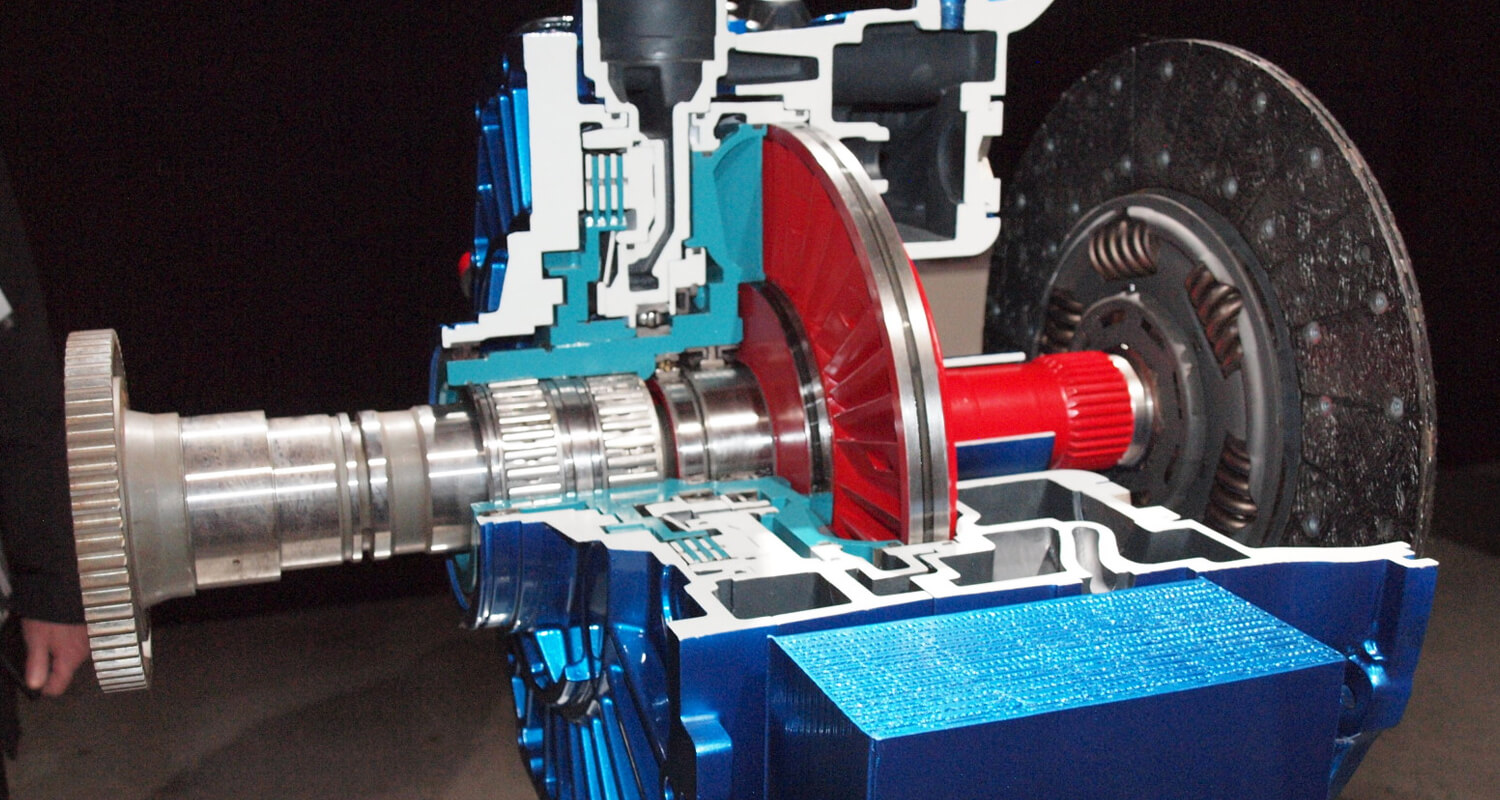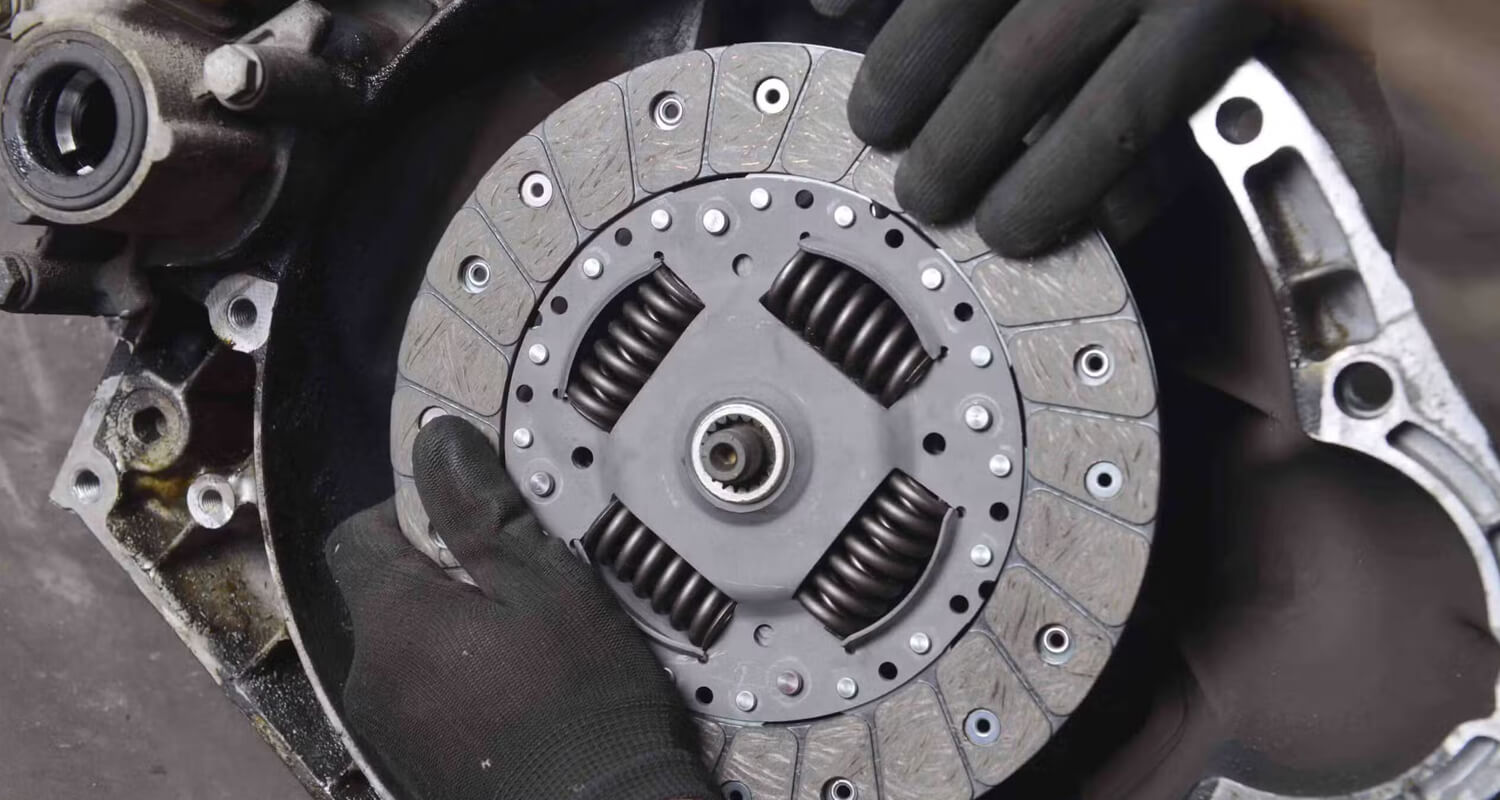Clutch in cars: How does it work and function?

Ever wondered what goes on under the hood when you seamlessly change gears in your car? The secret lies in a hidden hero – the clutch! This unsung champion plays a crucial role in transmitting power from the engine to the wheels, allowing you to shift gears smoothly and efficiently. Whether you’re a seasoned driver or just starting to learn the ropes, understanding the clutch in cars is the key to mastering the art of manual transmission.
In this blog, we’ll dive into the world of car clutches, explaining its mechanics clearly and engagingly. We’ll explore how it works, its various functions, and how it contributes to a smooth and enjoyable driving experience.
So, buckle up (pun intended) and get ready to unlock the secrets of the clutch!
How Does a Clutch Work?

At its core, a car clutch is a mechanical device that connects and disconnects the engine’s power to the transmission system, allowing you to change gears smoothly. Here’s a simplified breakdown of how it works:
- Input and Output: The engine is the input side, where power is generated. The output side is the transmission, which delivers power to the wheels.
- Clutch Disc: This is the key component that connects the engine to the transmission. It is splined to the input shaft of the transmission and spins with the engine.
- Pressure Plate: The pressure plate is connected to the engine’s flywheel. When the clutch pedal is depressed, the pressure plate moves away from the clutch disc, disengaging the engine from the transmission.
- Release Bearing: When the clutch pedal is pressed, it pushes against the release bearing, which in turn pushes on the fingers of the pressure plate, disengaging the clutch.
- Friction: The clutch disc is coated with a high-friction material. When engaged, it grips the flywheel and the pressure plate, transferring power from the engine to the transmission.
- Disengagement: When the clutch pedal is released, the pressure plate presses against the clutch disc, engaging the clutch and transferring power to the transmission.
Functions of Clutch
For gear cars, a car clutch is what helps the smooth transition between gears. It is a basic and primary component in the functioning of any vehicle. The clutch in a car is a crucial component that plays several key functions in the operation of a manual transmission vehicle. It is responsible for engaging and disengaging the engine from the gearbox, allowing the driver to change gears smoothly and control the power transfer from the engine to the wheels.
Here’s a detailed explanation of the functions of the clutch in cars:
- Engaging and Disengaging the Engine: The primary function of the clutch is to engage and disengage the engine from the gearbox and transmission system. When the clutch pedal is depressed, the clutch disengages, allowing the engine to spin independently of the transmission.
- Smooth Gear Changes: One of the most important functions of the clutch is to enable smooth gear changes. When the driver shifts gears, the clutch is used to disengage the engine from the transmission, allowing the driver to shift to the desired gear. Once the gear is selected, the clutch is engaged again to re-establish the connection between the engine and the transmission.
- Starting and Stopping the Vehicle: The clutch plays a crucial role in starting and stopping the vehicle smoothly. When starting from a stop, the driver depresses the clutch pedal to disengage the engine from the transmission, allowing the vehicle to be started without stalling.
- Controlling Power Transfer: The clutch helps control the amount of power transferred from the engine to the transmission. By partially engaging the clutch, the driver can control the speed of the vehicle without changing gears.
- Protecting the Transmission: Another important function of the clutch is to protect the transmission from damage. By temporarily disconnecting the engine from the transmission during gear changes, the clutch reduces the strain on the transmission components, prolonging their lifespan.
In summary, the clutch in a car is a critical component that enables smooth gear changes, controls power transfer, and protects the transmission from damage. Understanding the functions of the clutch is essential for safe and efficient driving, particularly in vehicles with manual transmissions.
Clutch Maintenance

Clutch maintenance is essential to ensure smooth operation and prolong the lifespan of your vehicle’s clutch system. Here’s an elaborative look at clutch maintenance:
- Avoid Riding the Clutch: Riding the clutch, which involves keeping the clutch partially engaged for extended periods, can lead to premature wear of the clutch disc. To avoid this, make sure to fully disengage the clutch pedal when not shifting gears.
- Proper Gear-Shifting Technique: Use proper gear-shifting techniques to minimize wear on the clutch. Avoid aggressive gear changes and ensure that you fully depress the clutch pedal before shifting gears.
- Avoid Slipping the Clutch: When starting from a stop, avoid slipping the clutch excessively to prevent overheating and premature wear. Instead, apply gentle pressure on the accelerator while releasing the clutch smoothly.
- Check Clutch Fluid: If your vehicle has a hydraulic clutch system, regularly check the clutch fluid level and top it up if necessary. Low clutch fluid can affect clutch performance and may indicate a leak in the system.
- Inspect Clutch Linkage: Periodically inspect the clutch linkage, including the clutch cable or hydraulic system, for any signs of wear or damage. Replace any worn components to ensure proper clutch operation.
- Check for Clutch Slippage: Clutch slippage occurs when the clutch fails to fully engage, leading to a loss of power transmission. If you notice any signs of clutch slippage, such as a high-revving engine without a corresponding increase in speed, have your clutch inspected and repaired if necessary.
- Replace Clutch Components When Necessary: Clutch components, such as the clutch disc, pressure plate, and release bearing, wear out over time and need to be replaced. If you notice any signs of clutch wear, such as difficulty shifting gears or a slipping clutch, have your clutch system inspected by a professional mechanic.
- Follow Manufacturer’s Maintenance Schedule: Follow the manufacturer’s recommended maintenance schedule for your vehicle, which may include periodic clutch inspections and adjustments. By following these guidelines, you can ensure that your clutch system remains in good working condition and avoid costly repairs in the future.
Takeaways
Understanding the functions and operation of your car’s clutch can help you appreciate its importance in your driving experience. By following proper maintenance practices and being mindful of how you use the clutch, you can ensure its longevity and optimal performance. Overall, proper clutch maintenance is essential to ensure smooth operation and prolong the lifespan of your vehicle’s clutch system. By following these tips, you can keep your clutch in top condition and avoid costly repairs.
Therefore, what’s the holdup? If you’re looking for a vehicle with a clutch system that suits your requirements and tastes, start searching OLX now!
Frequently Asked Questions
How can I tell if my clutch is worn out and needs to be changed?
Gears that slip, changing that is hard to do, vibrations in the clutch pedal, strange noises when the clutch is engaged, and a burning smell coming from the clutch are all signs of a worn-out clutch.
I have a car with a manual gear. Can I drive it without using the clutch?
“Clutchless shifting” means changing gears without using the clutch. However, this is not a good habit to get into because it can damage and wear out the transmission parts faster than they should.
How often should I get a new clutch for my car?
How long a clutch lasts depends on many things, like how you drive, how often you maintain your car, and the weather where you live. A clutch might need to be changed every 50,000 to 100,000 miles on average.
Can I add a speed clutch to my car to make it go faster?
Yes, performance clutches are available for some car types. They offer better longevity, more power, and better clutch contact qualities that are good for high-performance driving.
Can I use OLX to find cars with manual gears and clutches that have been well taken care of?
OLX does have a lot of listings for cars with manual gears, including ones that have clutch systems that have been well taken care of. You can look at listings in your area, get in touch with buyers directly, and ask about the car’s state and service records.


